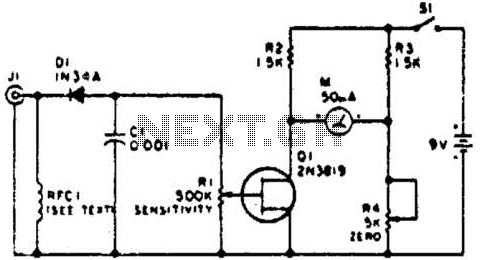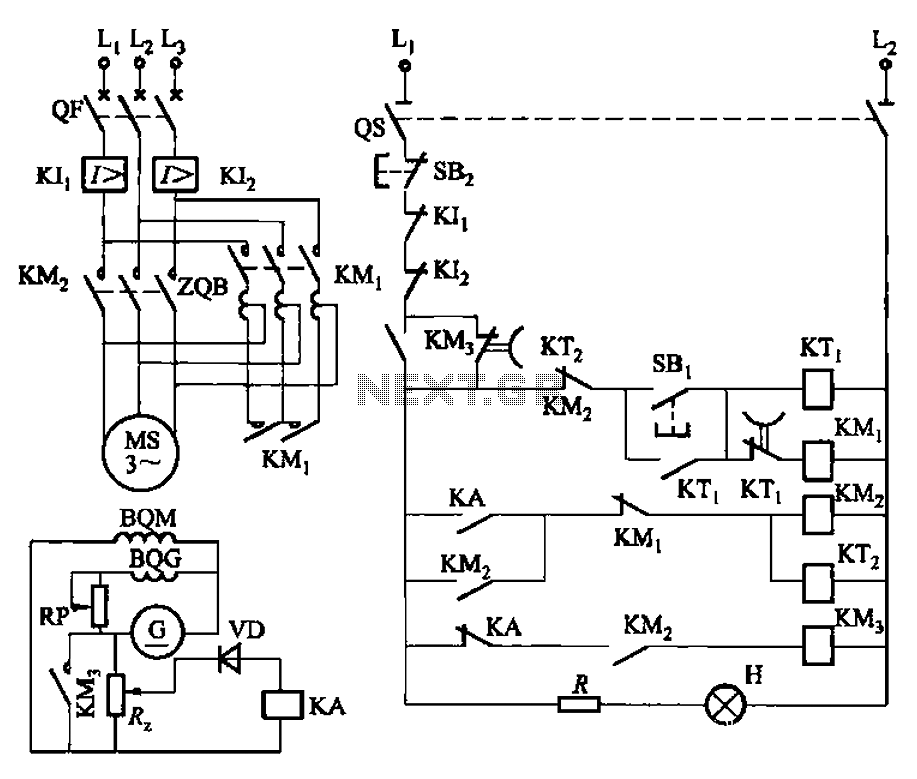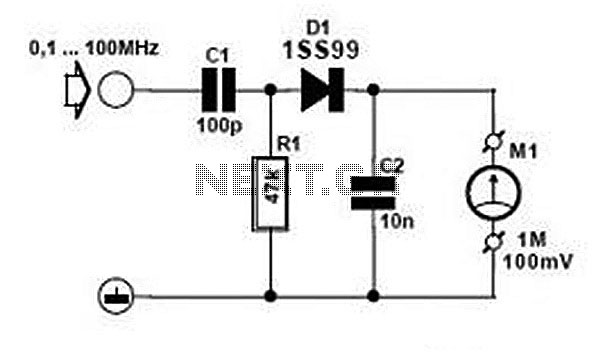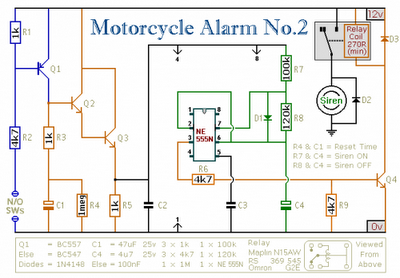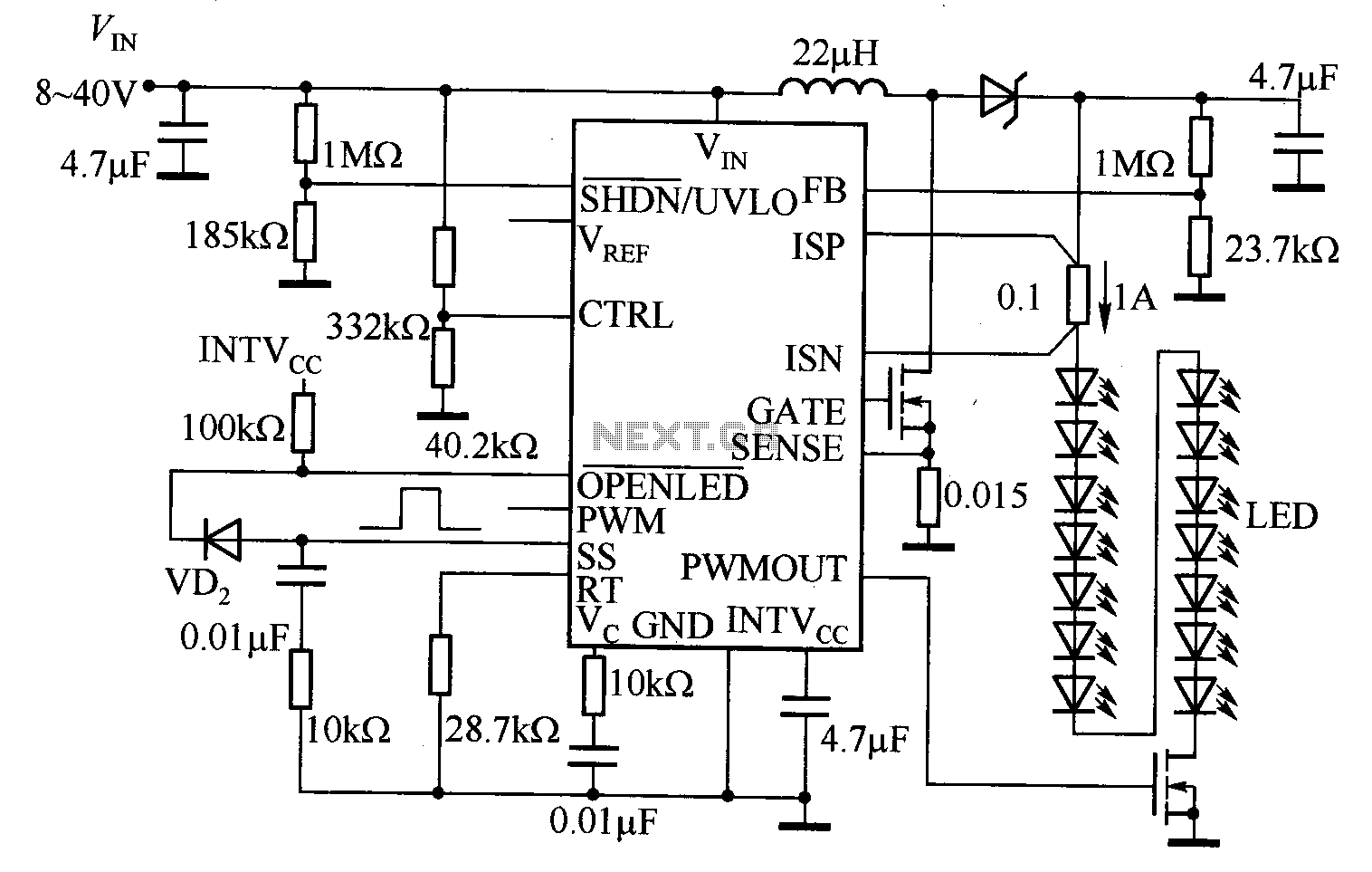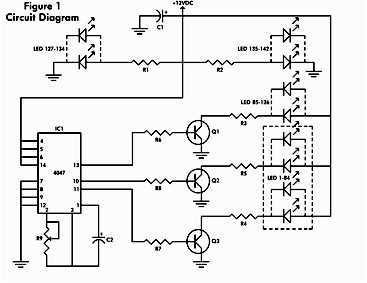
QRP antenna tuner circuit
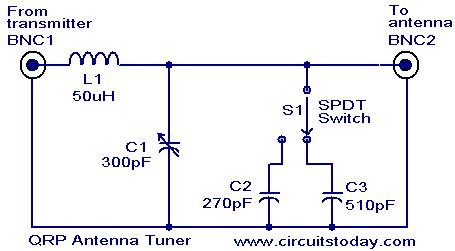
Low power (3 to 30 MHz) transmitters constructed by amateur radio operators are commonly referred to as QRP transmitters. A well-tuned antenna is essential for these transmitters; if the impedance is not properly matched, the output will be minimal or nonexistent. Conversely, when impedance is properly matched, the performance can be significantly enhanced. Below is a circuit designed to match the antenna effectively with the transmitter. The output of the transmitter is connected to the input of the tuner (connector BNC1). The output of the tuner (connector BNC2) must be connected to the antenna. To achieve maximum transmission power, adjustments should be made to L1 and C1. The transmission power can be monitored using a SWR meter.
The circuit for the QRP transmitter antenna matching system typically includes a tuner, which serves to adjust the impedance levels between the transmitter and the antenna. The tuner consists of a variable inductor (L1) and a variable capacitor (C1), which are critical components for achieving resonance at the desired frequency range of 3 to 30 MHz.
In the schematic, the transmitter output is fed into the tuner via a BNC connector (BNC1). The tuner then processes the signal and outputs it through another BNC connector (BNC2) to the antenna. The adjustment of L1 and C1 is crucial for maximizing the power transfer; this is performed by tuning these components while monitoring the output with a Standing Wave Ratio (SWR) meter, which indicates the efficiency of the power being radiated by the antenna.
Proper tuning ensures that the impedance seen by the transmitter matches the characteristic impedance of the antenna system, typically 50 ohms. If the SWR is low (ideally 1:1), it indicates a good match, allowing for maximum power transfer and efficient operation of the transmitter. If the SWR is high, it suggests a mismatch, which can lead to reduced power output and potential damage to the transmitter due to reflected power.
This circuit is particularly useful for amateur radio enthusiasts who aim to optimize their QRP operations, enabling effective communication over various distances while maintaining low power consumption.Low power ( 3 to 30 MHz) transmitters constructed by hams are generally called QRP`s. For such transmitters a well tuned antenna is a must. If the impedance is not properly matched there will be a little or no output. But if properly matched there will be great results. A circuit for matching the antenna properly with the transmitter id given below. The output of the transmitter is given to the input of the tuner( connector BNC1). The output of the tuner(connector BNC2) must be connected to antenna. Then adjust the L1 and C1 to obtain the maximum transmission power. The transmission power can be checked using a SWR meter. 🔗 External reference
The circuit for the QRP transmitter antenna matching system typically includes a tuner, which serves to adjust the impedance levels between the transmitter and the antenna. The tuner consists of a variable inductor (L1) and a variable capacitor (C1), which are critical components for achieving resonance at the desired frequency range of 3 to 30 MHz.
In the schematic, the transmitter output is fed into the tuner via a BNC connector (BNC1). The tuner then processes the signal and outputs it through another BNC connector (BNC2) to the antenna. The adjustment of L1 and C1 is crucial for maximizing the power transfer; this is performed by tuning these components while monitoring the output with a Standing Wave Ratio (SWR) meter, which indicates the efficiency of the power being radiated by the antenna.
Proper tuning ensures that the impedance seen by the transmitter matches the characteristic impedance of the antenna system, typically 50 ohms. If the SWR is low (ideally 1:1), it indicates a good match, allowing for maximum power transfer and efficient operation of the transmitter. If the SWR is high, it suggests a mismatch, which can lead to reduced power output and potential damage to the transmitter due to reflected power.
This circuit is particularly useful for amateur radio enthusiasts who aim to optimize their QRP operations, enabling effective communication over various distances while maintaining low power consumption.Low power ( 3 to 30 MHz) transmitters constructed by hams are generally called QRP`s. For such transmitters a well tuned antenna is a must. If the impedance is not properly matched there will be a little or no output. But if properly matched there will be great results. A circuit for matching the antenna properly with the transmitter id given below. The output of the transmitter is given to the input of the tuner( connector BNC1). The output of the tuner(connector BNC2) must be connected to antenna. Then adjust the L1 and C1 to obtain the maximum transmission power. The transmission power can be checked using a SWR meter. 🔗 External reference
